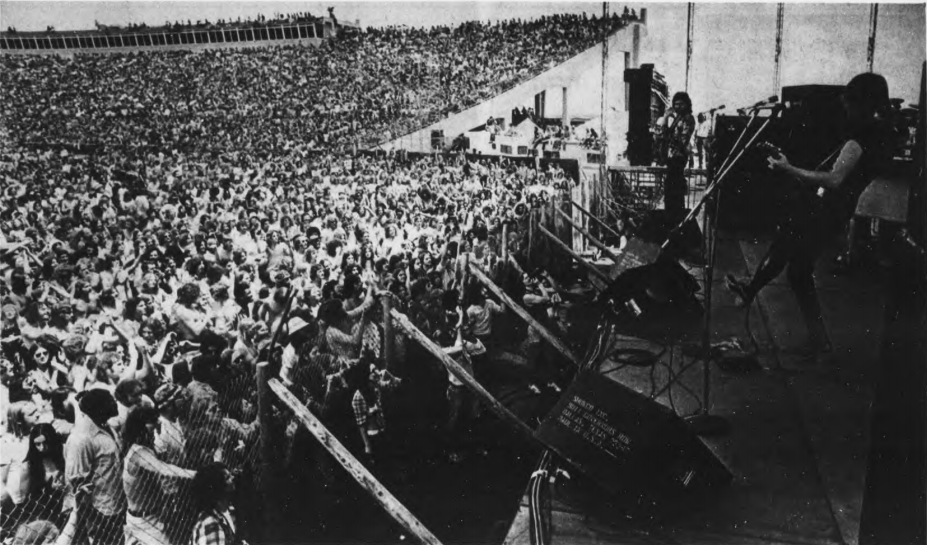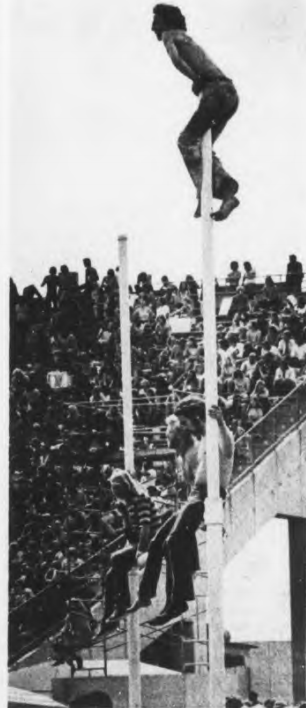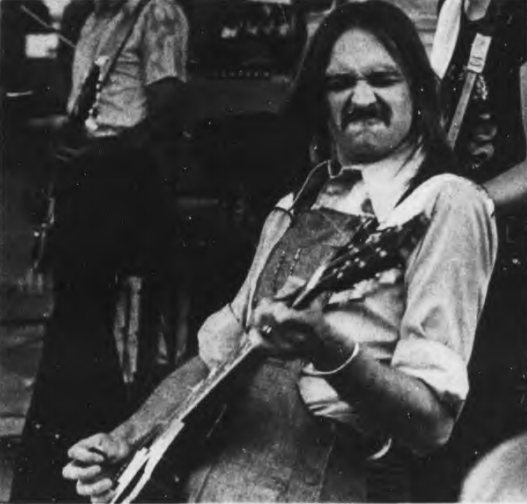
In our last History Blog installment, we began telling the story of how the Poe Ditch Music Festival came to be. Part 2 below details the festival itself — and the fallout of the legendary event.
The headline in the June 3, 1975 edition of The BG News about sums it all up.
“Poe Ditch Music Festival — drugs, rain.”
Reporter Joe Wollet had the enviable task of covering the infamous rock concert held at Doyt Perry Stadium.
“The great Poe Ditch Music Festival is over,” Wollet began. “Police are breathing easier now, grateful that more damage was not done. Many fans walked out of the concert with memories of a good time, while others left in ambulances.”

BGSU President Hollis Moore Jr. did not mince words: this would be the last concert of such a magnitude held on his campus.
“This large-scale rock concert experiment will not be repeated,” Moore was quoted as saying.
The festival, organized jointly by the student-led BGSU Cultural Boost Office and outside music promoters, was advertised to Falcons as an exciting way to shed the campus’ reputation as “Boring Green.” Student organizers hoped to put on a fantastic show to prove to campus officials it could be done — and to entice other big acts to see BGSU as a worthy touring spot.
Instead….
The first problem was crowd size. When student ticket sales lagged, organizers began advertising the concert around the Midwest. This led to tens of thousands of people coming to BGSU from outside of Ohio, and the attendance was much larger than was expected.
Making matters worse, it started to rain. Two of the biggest acts, Golden Earring and Johnny Winter, refused to perform out of fear of electrical shock.
Not that it mattered much anyways. The sound system was lackluster, and concert-goers packed in like sardines could barely hear the music. So they turned to other pursuits — a whole host of drugs, from marijuana to LSD, were smuggled into the stadium and sold openly throughout the day.
A man even drove from out-of-state to sell individual cans of Coors beer from the bed of his El Camino pickup truck. Some people grumbled at his high asking price of $1 per can.
Two people broke into the track press box and broke all the windows. Sensing opportunity, another person threw a molotov cocktail through an open window and the entire press box was engulfed in flames.
Police presence was minimal. Organizers had promised to supply ambulances and security guards, but few showed up, leading to a raucous day at The Doyt.
In all, more than 300 people were treated at the concert’s first-aid station and dozens more were transported to Wood County Hospital. Fifteen people were arrested, though Wood County Sheriff Raymond Coller complained that number should have been in the thousands.

“Had it not rained,” one student organizer told The BG News, “everything would have been okay.”
Along with reporting from Joe Wollet and David Fandray, student photographers Dan Feicht, Stephen Donnelly and Jim Osborn took many photos from throughout the day.
Only one-tenth of the audience were BGSU students, so it was easy for locals to place the blame elsewhere.
“(O)utsiders caused concert failure,” the student newspaper opined.
Business owners, meanwhile, were thrilled with the increase in traffic. Bars, restaurants and hotels all had a great weekend.
Not that local officials cared. By the next week, Bowling Green City Council members gathered to discuss a ban on any future rock festivals.
There have not been any major rock concerts held at the football stadium since that infamous day in 1975, though other mainstream acts continued to perform at BGSU. Anderson Arena and the modern Stroh Center have played host to a number of stars from Crosby and Nash to Florida Georgia Line.
You can read more of the original coverage of the Poe Ditch Music Festival by viewing The BG News archive from June 3, 1975 here.
— By Tyler Buchanan, BG News class of 2013
